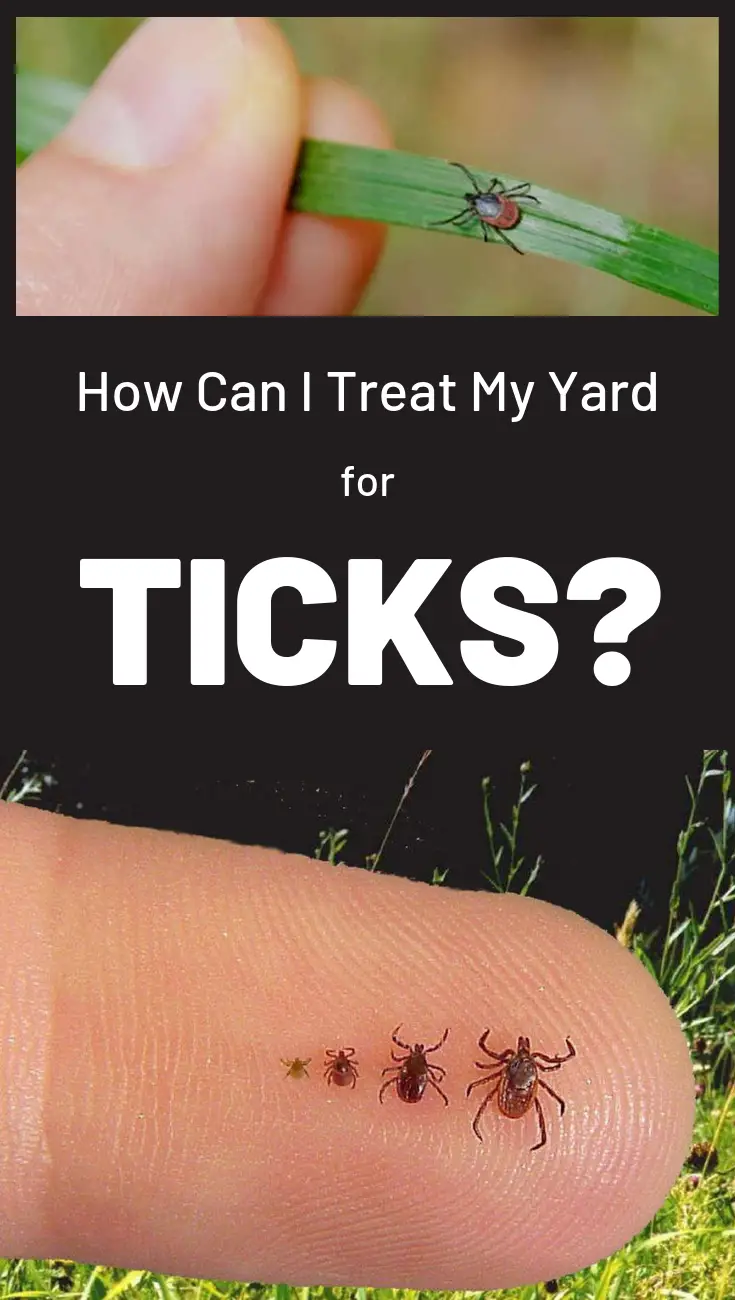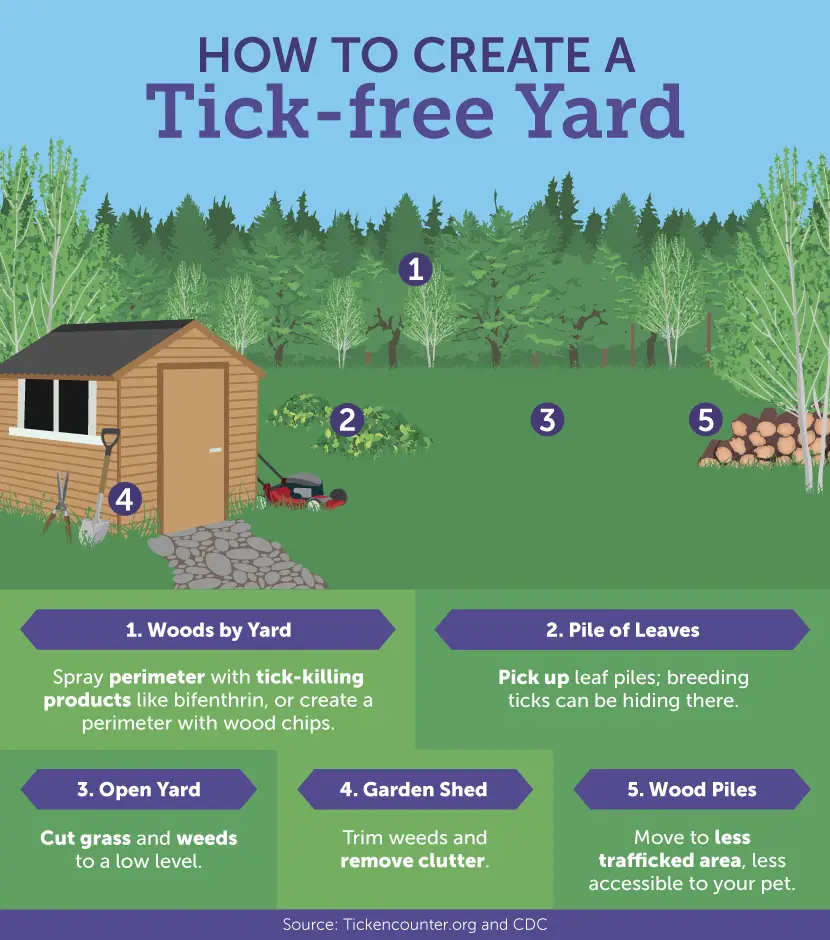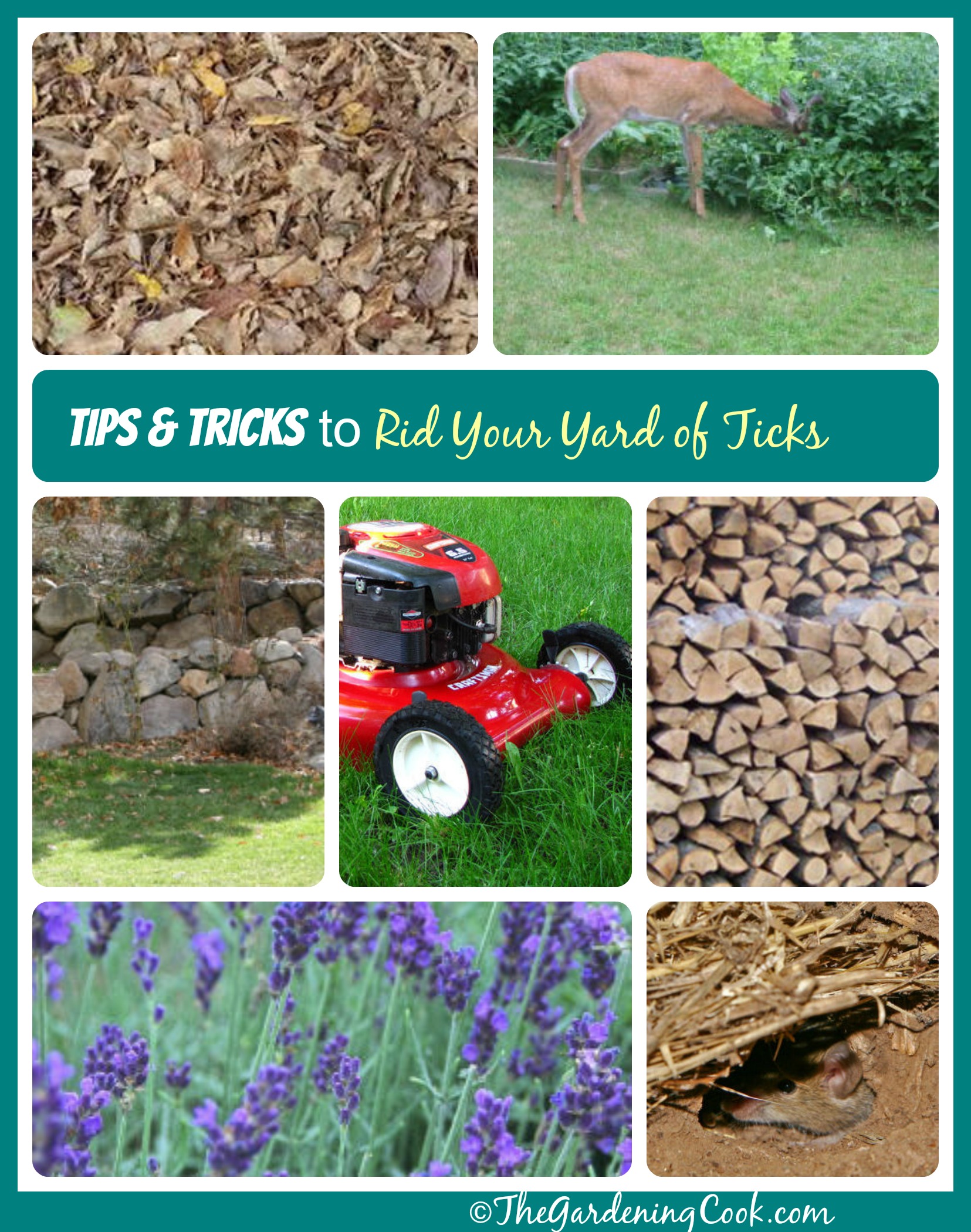Create A Barrier From Shaded Areas
Add a 3 border to edge of yard. If you live near a tree-line or wooded area, adding a 3 foot border of wood chips or pea gravel creates a nuisance for tick movement and in most cases will avoid crossing. Its important to use traditional wood chip mulch and not the dyed variety, the latter of which can often be moist.
These barriers naturally repel ticks without any other sprays, as ticks dont want to cross such areas.
Keep recreational areas within the border. Placing swingsets, patios, and decks as far away from the treeline will drastically reduce your exposure.
How To Kill Ticks In Your Yard
Ticks are deeply unpleasant, blood-sucking pests that can carry and spread disease. Fortunately, a bit of preventative maintenance and some professional assistance can help keep your lawn tick-free. Keep reading to learn how to kill ticks in your yard.
You know what to look for: an insect about the size of an apple seed latched onto the skin or a rash shaped like a bullseye. As a homeowner, youll want to take care of a tick problem before these pests actually latch on to you, your children, or your pets. Luckily, tick infestations are uncommon in a well-maintained yard, but they do happen, so here are some steps to help you kill ticks in your yard.
Keep Play Areas Safe From Ticks
Locate swing sets, playhouses and other play areas in your yard away from the most densely wooded areas. If possible position them in sunny areas.
This will give children and pets more protection and keep ticks out of the play areas.
Use rocks or long cedar timbers as dividers from wooded areas. This will help to keep ticks away from areas most often used.
Read Also: How To Change Oil In Craftsman Lawn Mower
Tips For Preventing Ticks
The Centers for Disease Control and Prevention offers this list of preventive measures to discourage ticks from your yard:
- Remove leaf litter, tall grasses, and brush.
- Add a 3-foot barrier of wood chips or gravel between your lawn and a wooded area to restrict tick migration.
- Keep your grass as short as possible by regularly mowing.
- Neatly stack any wood pile, and keep the wood dry. This helps to deter rodents.
- Don’t place playground equipment on a border near trees. Likewise, don’t build a deck or patio close to a wooded area if possible. Try to pick a sunny location that ticks won’t like.
- Discourage unwelcome animals from entering your yard by building a fence.
- Don’t leave old furniture or trash in your yard, as it can provide shelter for ticks.
Add Mulch Barriers Around Woodland Edges

If you have woodland, hedges, or meadow edging your yard, add a 3-foot wide mulch border between your yard and the wild space.
Go for dry wood chips or barks, not the shredded kind. Ticks cant cross the barrier because its dry and hot, and itll remind family members to be careful when crossing it.
Recommended Reading: Ecoscraps Fertilizer Vs Milorganite
Mow Grass Trim Shrubs And Get Rid Of Debris
Fleas like moisture and shade. Keeping your grass and shrubs cut short allows sunlight to light things up and dry them out. Get rid of any clippings, leaves, and straw lying around outside, too. They can hold moisture.
Ticks like tall grass and yard waste as well as old furniture and trash in the yard where they can hide. Clear it all out.
What Are The Best Ways To Get Rid Of Ticks In Your Yard
Good news: The yard work thats already on your to-do list this time of year will help keep your tick exposure to a minimum. Ticks thrive in woodsy, high-humidity areas, and their carriers are apt to wander through tall grasses or hide in piles of leaves, wood, and other debris.
So, cleaning up your yard could help lower your chances of welcoming in ticks and the animals that carry them. Ticks do not like sunny, manicured lawns, says Sunjya Schweig, MD, scientific advisory board member for the Bay Area Lyme Foundation and co-director of the California Center for Functional Medicine in Berkeley, California.
Here are a few ways to keep your yard as tick-free as possible:
- Keep your grass short. Ticks tend to climb onto you from surrounding greenery, so mow your lawn often , promptly rake up and remove leaves, and prune bushes and trees, says Jim Fredericks, PhD, chief entomologist for the National Pest Management Association.
- Create tick-safe hangout spots. Looking for a fun project for spring? Consider laying down a gravel or stone walkway or patio for an area near your home where you dont have to be on guard for ticks so much, or spread three feet of wood chips or mulch around the border of your yard to deter unwanted invaders, the CDC recommends.
You May Like: How To Clean Mold Off Lawn Chairs
I Found A Tick On My Skin Or My Pets Skin Now What
A lot of myths are circulating about the best way to remove a tick, but the best way is still with a pair of tweezers. Avoid using folk remedies like burning the tick or applying vaseline or nail polish.
To remove a tick :
Do not use nail polish or vaseline over the tick the most important thing is to get the tick off as soon as possible. Squeezing the tick does not actually cause the tick to produce more saliva or increase your risk of disease.
Ticks that have been attached to the skin for less than 24 hours are unlikely to have passed any tick-borne illness. The CDC does not recommend sending a tick in for testing by a private company, unless requested for a doctor, as the results can be misleading.
Threaten Ticks With Predators
If youve always wanted a pet duck or to build a chicken coop in your yard, heres some extra incentive: Ducks, chickens, and other types of ground-feeding birds are tick predators! By just having these “predators” in and around your yard, you can drastically decrease the number of ticks in a safe and organic fashion!
Dont worry, though if youd rather not add any more members to your family, winged or otherwise. You can always call Go Green Lawn Services to inquire about our tick and flea treatments for yards in Newtown, PA, and the surrounding communities. Our lawn care experts know how to employ natural insect remedies to help you and your family get maximum enjoyment out of tick season this year.
Also Check: How To Change Oil In Craftsman Lawn Mower
S To Get Rid Of Ticks
Prevention essentially relies on reducing encounters with infected ticks primarily black-legged ticks . This requires a multi-faceted approach focusing on reducing localized tick populations through both environmental changes and targeted insecticides. Follow this easy 5-step guide to get rid of ticks from your yard.
Infect And Exterminate Ticks Organically
One way to exterminate ticks is to spray your yard with beneficial nematodes, which are tiny roundworms that can be found in soil and carry bacteria that are infectious to ticks and tick larvae. Once the bacteria are released from the roundworm into another insect, it can take as little as 24 hours to kill that insect.
Read Also: Craftsman Lt1000 Oil Type
Controlling Ticks In My Garden
Ticks can carry lyme disease and other of dangerous diseases, and although there are several types of ticks, they all have eight legs and rounded bodies. Contrary to popular belief, ticks dont jump or fly and they dont fall from trees. However, they wait on convenient places such as brush, shrubs or blades of grass, where they are primed to grasp warm bodies that walk by. Usually, they begin on the lower legs, then work their way up the body until they find a handy place to dine.
It is for this reason that tick control for yards and gardens is important. If possible, make an effort to get rid of ticks naturally. Natural control is safer for people, pets and the environment, and natural techniques are generally much more effective than pesticides.
If you notice ticks, spray or dust the borders of your yard with a product containing pyrethrins, which are natural insecticides produced by pyrethrum daisies. Some products may consist of a synthetic compound derived from the natural substance. Additionally, you can treat areas around doghouses or kennels, as well as shrubbery and grassy or brushy areas.
Why Is Tick Control So Important

A primary reason is that ticks are notorious for spreading disease. These facts and statistics show why homeowners should consider getting tick yard treatments: The U.S. is a hot spot for tick-borne diseases. Scientists have detected at least a dozen new diseases transmitted by ticks over the last 50 years. And according to the CDC the number of people affected by Lyme disease has roughly doubled since 1991. One tick bite can cause multiple diseases. It is important to add tick control to your lawn service for a healthy and safe yard to enjoy.
You May Like: How Much Peat Moss For Lawn
Identifying Types Of Ticks
Theres quite a few varying species of ticks throughout the United States, all of which have varying geographic spreads, life cycles, and diseases. If you recently found a tick, use the chart below to help identify .
While any of these ticks can bite, the ones that most commonly bite humans are Blacklegged Ticks, Lone Star Ticks, and Dog Ticks, however our treatment guide will work for any of the ticks shown above. If youre looking for more information on each tick, the CDC has an excellent guide on the full geographical ranges/spreads.
Create A Citrus Based Repellent
One of the questions I am often asked is How to get rid of ticks in yard naturally? This citrus tick spray for yards is one way.
Ticks avoid all types of citrus plants, which makes citrus an effective weapon. Home remedies for ticks in yards often make use of natural ingredients. To make a citrus based repellent:
Boil 2 cups of water, and add two chopped lemons, limes, oranges, or grapefruit. Let it boil for a minute or so, then simmer for an hour.
Strain the fruit out, let it cool, pour into the sprayer, and squirt it on you, your kids, your pets, your yard and anywhere ticks might be found in your yard.
The main thing to keep in mind is that a clean yard, free of refuse and well tended is far less likely to have ticks become a big problem.
Admin Note: This post first appeared on the blog in July of 2014. I have updated the article to add new information, photos a printable check lists card and a video for you to enjoy.
Also Check: Aerator Lowes Rental
Pest Control To Avoid
One popular method of pest control that comes with its share of dangers is permethrin. In typical use, it is dangerous to have direct skin contact with permethrin. It is even suggested to spray permethrin on your clothes or camping equipment and let it dry before use to lower risks of side-effects, but that kind of preparation can sometimes be difficult or impossible.
Permethrin is also found in some yard sprays to prevent ticks, but the dangers are vast. The potential problems permethrin can create include general skin irritation, itching, and burning, all the way to digestive problems, nausea, dizziness, and vomiting.
You may wonder why such a method is still an option at all. Luckily, there are natural methods that dont bring up these same concerns, and are just asif not more!effective as using permethrin.
How Dangerous Are Ticks
Ticks feed on human and animal blood, and they can transfer bacteria and other pathogens into their hosts when they feed, causing disease. The most common of these tick-transmitted illnesses is Lyme disease, associated with the deer tick, or blacklegged tick, in the East and northern Midwest. Ricketts, Rocky Mountain spotted fever, and tularemia can also be spread by ticks. Theres also been evidence that the bite of a lone star tick can cause a person to develop an allergy to red meat.
Of course, these are largely worst-case scenarios, and most tick bites dont bring illness. Still, youll want to keep your family and pets free from ticks, which latch on and feed off a host for up to 10 days at a time. During this period, the mouthparts of the tick will hook into the skin with barbs, making it very difficult to remove completely.
If you notice a tick on your skin, you should remove it immediately, ideally within the first 36 hours after being bitten. Better yet, wear long pants, high socks, and bug repellent when walking through areas where ticks live.
Read Also: How To Revive Brown Lawn
Mow Your Lawn Regularly
Areas with tall grass and branches may cast a shadow over your garden, giving disease-carrying deer ticks a shady environment to call home. To avoid having these pests seeking shelter in your yard, mow the lawn so the grass is only a few inches high. You may need to trim it at least once every two weeks to keep it short, but keep in mind that cutting it too much will make it grow back quicker.
Keeping the yard trimmed eliminates places where ticks can hide. As you mow the yard, use the bagging attachment on the lawnmower to collect clippings instead of letting them pile on the grass. It also helps to trim low-hanging branches and tall weeds with the appropriate tools to reduce shady spots in the yard.
Are There Any Tick Repellents To Avoid If You Have Pets
If you have cats, think twice about using permethrin. Permethrin is used as a spray to protect dogs and people from tick bites, but high doses are very harmful to cats. Cats are especially sensitive to permethrin, as they seem to be unable to metabolize permethrin like other mammals can. Sprays for dogs have too much permethrin for cats, and some cats are so sensitive that even brushing up against a dog thats been treated can cause tremors, seizures, or even death.
Dogs too can be sensitive to high doses of permethrin, so its best to skip the DIY and get a product specially labelled for dog use.
This doesnt mean that you shouldnt use permethrin at all, as the benefits of avoiding tick-borne disease in you and your pets may outweigh the risks, but you should be cautious.
If you decide to use permethrin spray:
Recommended Reading: How To Revive Brown Lawn
Spray Tick Killer And Igr
Permethrin is part of a group of chemicals called pyrethroids, and is a synthetic version of the natural extracts from the chrysanthemum flower. This is one of the most often recommended insecticides for treating large areas where people and pets may play in. In fact, this can even be used in places where food and livestock are handled.
Permethrin comes in a variety of forms including liquids, powder/dust, aerosol, and even pre-treated clothing. For treating your yard, you should use Permethrin SFR concentrate with a 2-gallon sprayer. One quart of Permethrin concentrate will make about 34 gallons of solution at a rate of ~1oz/gallon, so its really affordable as well.
Why DoMyOwn?DoMyOwn.com offers professional-grade insecticides to DIYers while ensuring proper storage of chemicals. Couple that with their impressive customer service and knowledgeable staff, its the #1 choice.
This tick spray will quickly kill ticks it comes into contact with, which is exactly what you want when you have active ticks on your property. If you do not want to deal with mixing concentrated pesticides, Bens Tick Fence uses Permethrin as an active ingredient and comes with a battery-powered ready-to-use spray wand.
We also recommend Archer IGR as an additive to the Permethrin listed above . The active ingredient in Archer IGR is pyriproxyfen, which is an Insect Growth Regulator.
Where to spray in your yard?
Choose Yard Plants That Repel Pests

Some plants may be attractive for pests, but others tend to keep them away from your yard. Consult your local garden center or nursery to discover which trees, plants and shrubs may be attracting deer and other hosts onto your property so you can remove them from the area. Planting eucalyptus, thyme, citronella and geraniums may help repel ticks, arachnids and other common critters. Besides preventing ticks, these plants are also visually appealing and give off a pleasing aroma.
Even though planting repellant flowers is an effective pest control method, you shouldnt use it as a primary method for dealing with ticks in the yard. Youll have to use other methods along with strategic plants to eliminate ticks from your property.
Don’t Miss: Where Is Cub Cadet Manufactured
